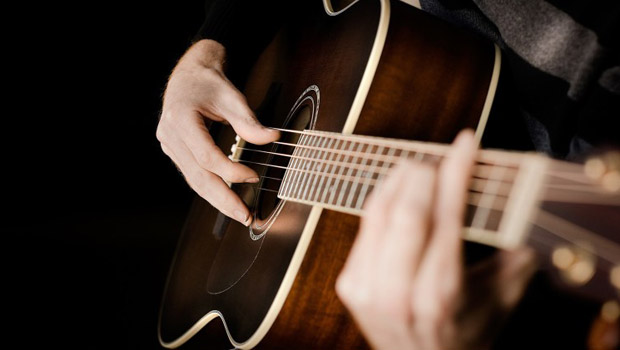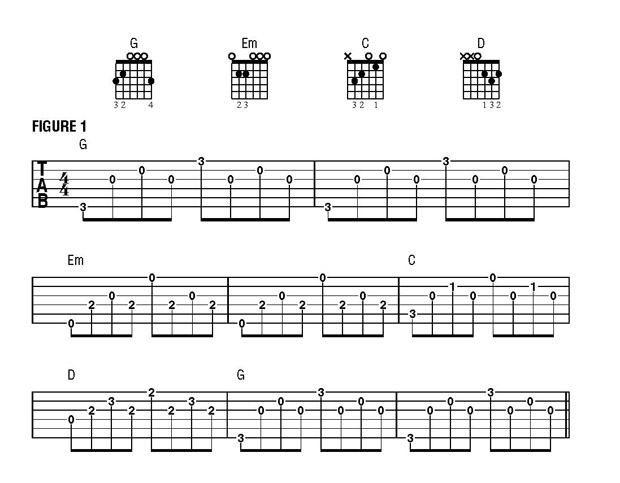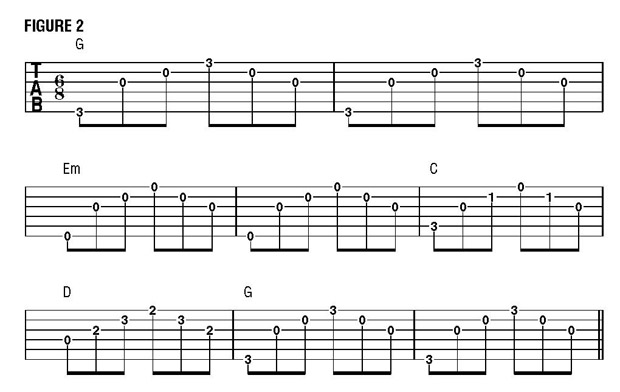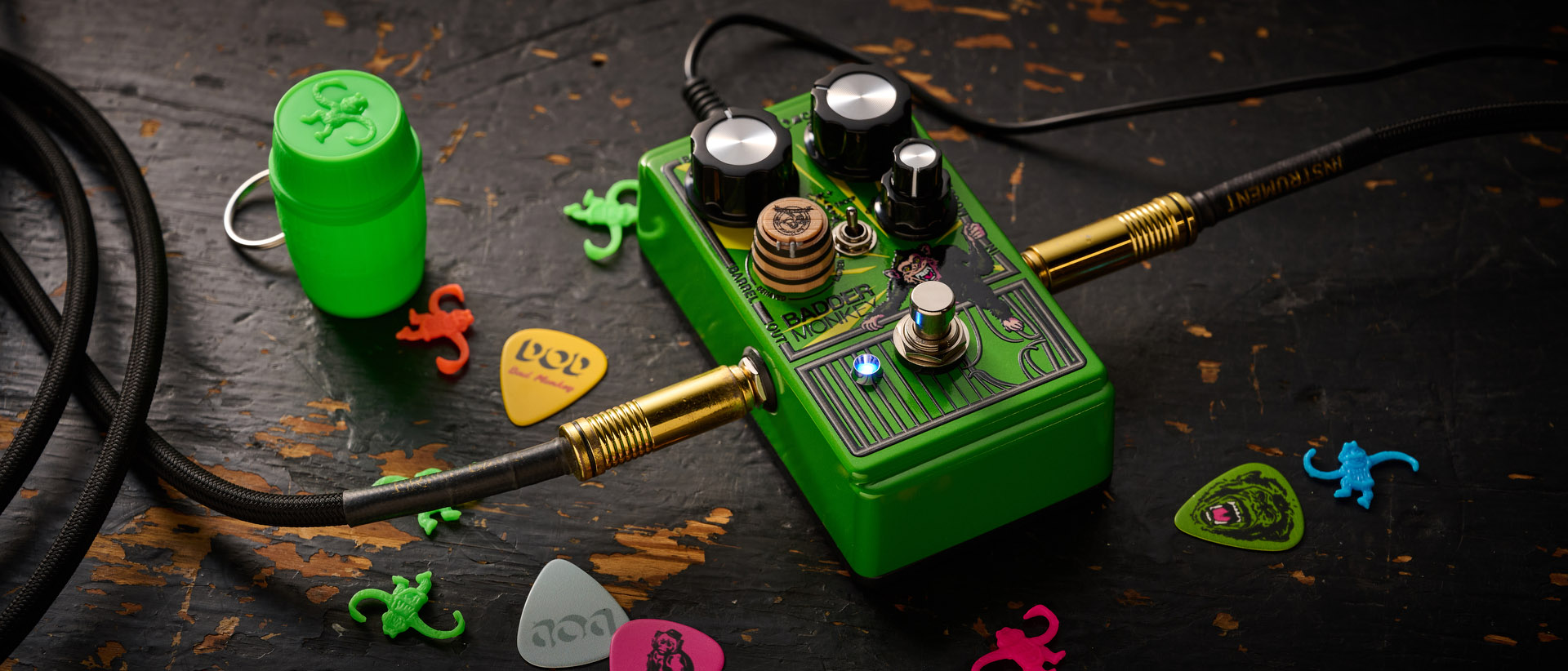Using Broken Chords to Add a Little Drama

The full-chord strum is only one way to skin the rhythm cat. A subtler but no less effective approach is playing broken chords, which involves successively picking the individual notes of a chord in a following pattern.
First, a brief side trip into musical arithmetic. Rhythm, and by extension music style itself, is based primarily on the number 2, 3 and 4. When you combine beats in groups of two and accent the first beat, you get the basic pattern for such two step styles as polka, country, rockabilly and the march. Three-beat patterns underlie the various waltzes, from Viennese to jazz. Four-beat patterns define practically everything else - rock, funk, pop etc.
Divide a beat by two and you get eight notes (counts “one-and, two-and,” etc.); divide by three (“one-and-uh, two-and-uh,” etc.) to make triplets; or divide by four (“one-ee-and-uh, two-ee-and-uh,”) to create 16th notes.
Beat patterns, called meter, are indicated by a time signature, with the top numeral indicating the number of beats in the pattern and the bottom one showing what type of note gets one beat (usually quarter notes, indicated by the number 4). Name a popular style and tempo, e.g. fast rock, medium funk, slow blues, etc., and with few exceptions and rhythm boils down to some combination of these numbers.
An arpeggiated, or “broken,” chord simultaneously outlines the harmony, meter and rhythm. Figure 1 shows a typical medium-tempo progression of open chords (reminiscent of the Police’s “Every Breath You Take”).

Hear it here:
The notes of each chord are arranged in a flowing eighth-note pattern that repeats every four beats. Form each chord using standard fingering, as illustrated in the grid diagram above the tablature, and hold it down throughout the bar. If you’re picking with bare fingers or a thumbpick, use your thumb for the first note of each chord (the root), your index finger for the G string, middle finger for the B string and ring finger for the high E.
All the latest guitar news, interviews, lessons, reviews, deals and more, direct to your inbox!
Coordinating your fingers will take some concentration at first, but the independence of movement you’ll gain will make it worth your effort. If you use a flatpick, play the first two notes of each bar with downstrokes and then alternate upstrokes and downstrokes for the rest of the bar.
Figure 2 shows the same progression played at a slower tempo with a triplet rhythm; the 6/8 meter can basically be conceptualized as “two-beat with triplets.” Pick each string with a different finger; when using a flatpick, play consecutive downstrokes on the first four notes of each bar and upstrokes on the last two. This broken-chord style has been featured on countless recordings of popular songs, particularly soul/R&B ballads.

Hear it here:
Once you have a feel for the meter and beat division of each example, you can very the selection and order of notes in each chord pattern to your heart’s content, and extend the same approach to practically any progression you can dream up.
